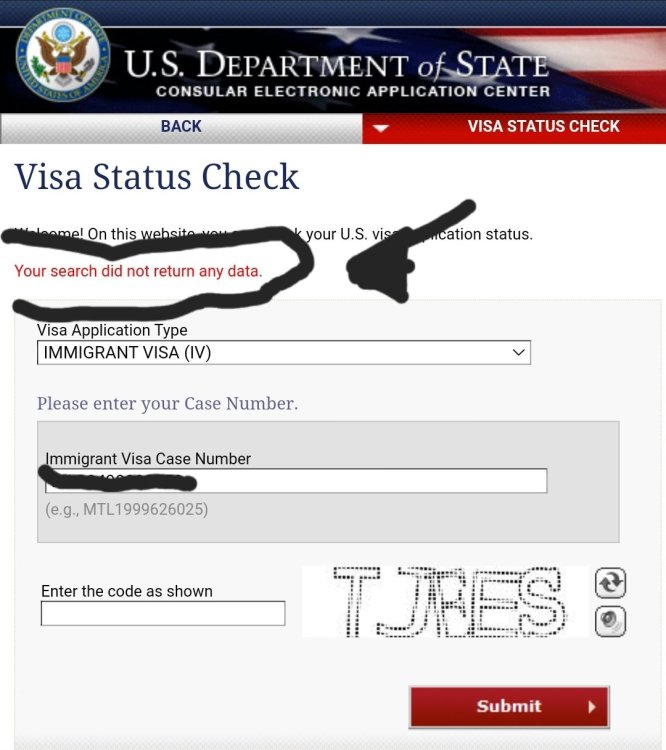| Welome Guest!
Registered members can access many other great features such as finding other local VJ members from their country!
| |
US Immigration from Myanmar
|
 Quick Links Quick Links
 Myanmar Members
 Rangoon Consulate Information
 Consulate Reviews
 Myanmar Visa Timelines
 Recent Topics Recent Topics
 Hot Topics Hot Topics
|
Pages: 1 2 3 4 Last (Viewing page 2 of 8 ) - topics in the last 5 years
| Green card not yet received after 90 days |
|
 5:06 am January 26, 2025 5:06 am January 26, 2025 | |
|
kyaw

Read 2283 Times
9 Replies
|
Hi, my mom arrived on 10/11/24, I have paid the green card fees the day before she enter US. She still have not received her green card, when I check the case status online using receipt number from the payment confirmation email, the status is still show will receive green card within 90 days after payment. what steps should I take to track down her green card? both online or phone call to uscis did not help to find out the status of the card.
|
| |
|
|
| invalid image detected error when uploading documents |
|
 6:50 am October 25, 2024 6:50 am October 25, 2024 | |
|
Azuraken

Read 17179 Times
5 Replies
|
Hello, I am working on submitting i-864 and having trouble submitting supporting documents. I am not sure if it is just me or if everyone is experiencing a similar issue of invalid image detected I tried multiple browsers, resizing the PDF to under 2 MB, printing it, and resaving it as a PDF via browser. Nothing seems to work. I appreciate your suggestion. Thank you.
|
| |
|
|
| People waiting for loved ones from dangerous countries, how are you holding it together? |
|
 1:22 pm July 30, 2024 1:22 pm July 30, 2024 | |
|
DevinB

Read 924 Times
9 Replies
|
My wife is in myanmar right now. I'm Scared for her safety all the time. There are bombings across the country, violence in general. If you have a family member in a similar situation how do you keep it together? From what I've seen on here it seems my wife could be hit by a bombing and still not receive an approval for an expedite plus I don't even know what evidence they'd accept either. How do you cope with the constant worry? The fear? Is it really all just grit your teeth and keep going? Is there anything you do that actually helps? I filed back in August and it seems like every month I do a little worse at keeping myself calm.
|
| |
|
|
| N-400 - should I even attempt? |
|
 10:14 am June 16, 2024 10:14 am June 16, 2024 | |
|
fifteenyconfusion

Read 798 Times
1 Replies
|
Hello, everyone. About 12 years ago, when I was 10, my parents were sponsored into the US by my uncle. I was then approved for a green card. Two or three years later, my parents left the country due to their parents' urgent medical conditions and brought us along with them. I never returned to the US for just under 8 years after that. Then, January of 2022, I came back via SFO airport and was held back for questioning. Over the 3 hour process, I was grilled on what I had been doing over the 8 years since I'd left, and had to pay a $585 fine to fill out and submit an I-193. They also put on my passport, "ARC OUT 8 years, ACH RES REQ's". A month or so after that, I went through the green card renewal process and got the renewed green card about 8 months later. I am currently a software engineer working in Seattle. I have not been in so much as been in a traffic stop, and file my taxes fine every year. In about 2 years and 6 months, my 5-year continuous residence will be up and I plan on applying for naturalization then. It is hard to find people with similar situations to me on the internet, and different sources say different things, ranging from - Don't worry at all and submit, they don't care about your travel history past 5 years.
- Submit, but expect a lot of questions and a possible denial.
- Don't submit at all, they may look at your past travel history and decide you shouldn't even have gotten a renewal and may give you a notice to appear in court and deport you.
My questions to the knowledgeable people on this sub are: - When submitting my naturalization, do they care about travel past 5 years?
- Will the stamp on my passport give me problems (should I put that in with my application)?
- Are they able to look up travel information from that time I was out of the country, and will that cause issues?
- Do I need to hire a lawyer when I start my naturalization proceedings?
Thank you very much in advance.
|
| |
|
|
| Your search did not return any data |
|
 6:27 pm December 31, 2023 6:27 pm December 31, 2023 | |
|
C. Bradford

Read 2565 Times
4 Replies
|
Trying to check on my fiance's visa application and it's giving me this error message. Has anyone seen this before or does anyone know what the issue is? All I can find is that it gives you that message when you type the case number wrong but I have quadruple checked this and it's not the issue. 
|
| |
|
|
Pages: 1 2 3 4 Last (Viewing page 2 of 8 ) - topics in the last 5 years
|
Recent Visa Approvals
Upcoming Interviews
Newest Myanmar Members
 Kelvin Gurung Kelvin Gurung
 bbfan03 bbfan03
 fifteenyconfusion fifteenyconfusion
 DevinB DevinB
 japhetceu japhetceu
 C. Bradford C. Bradford
 bay007 bay007
 Skha12 Skha12
 Pau Lun Pau Lun
 ttAndtt ttAndtt
( view all )
Top Posting Members
1. Mike E
2. UnIqUe
3. Koekoe
4. Birveonrty
5. Rachel Chen
6. Prince 1214
7. jam2016
8. Panda Sky
9. jenny92
10. MissEmily
|
 Kelvin Gurung
Kelvin Gurung bbfan03
bbfan03 fifteenyconfusion
fifteenyconfusion DevinB
DevinB japhetceu
japhetceu C. Bradford
C. Bradford bay007
bay007 Skha12
Skha12 Pau Lun
Pau Lun ttAndtt
ttAndtt








